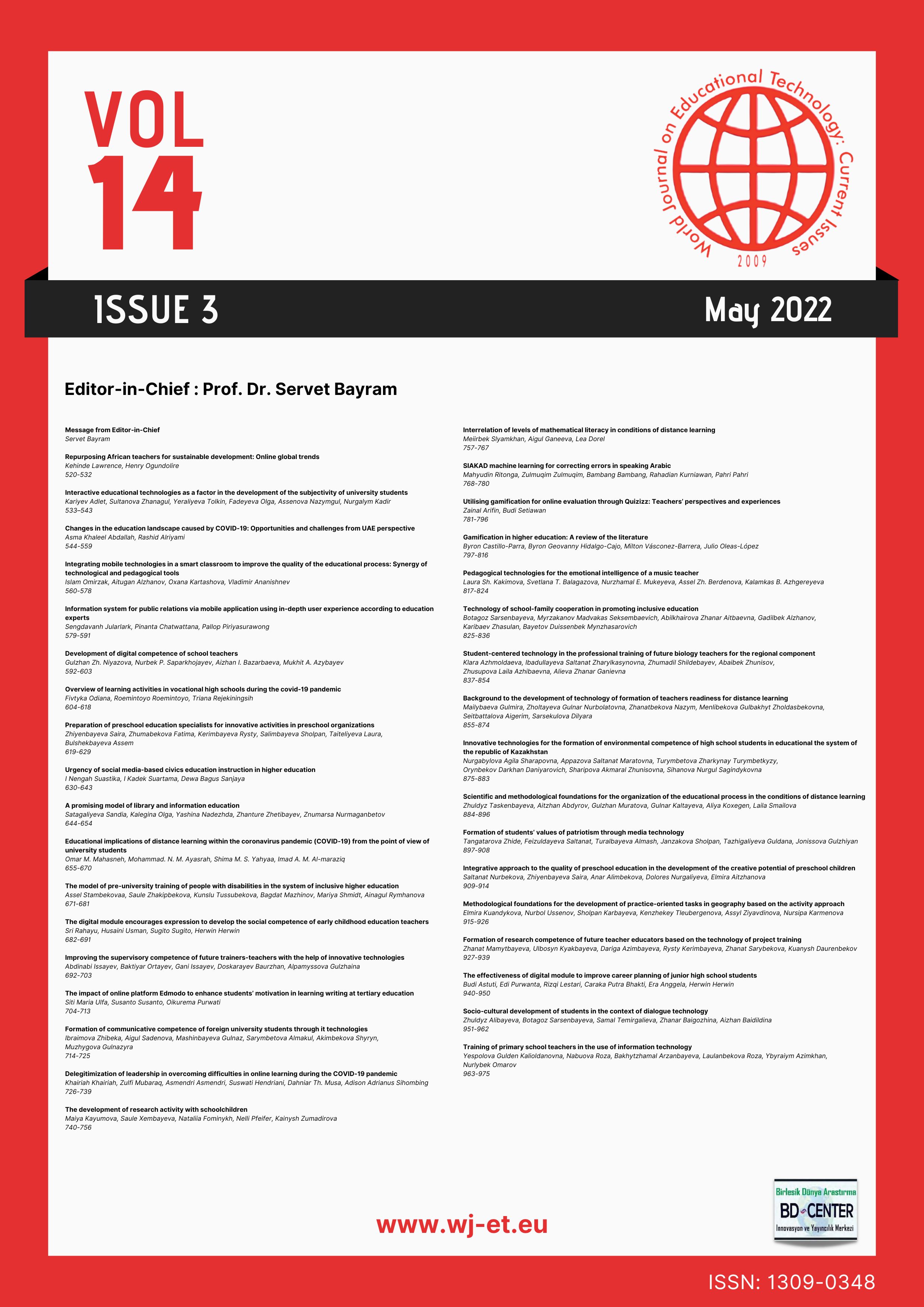SIAKAD machine learning for correcting errors in speaking Arabic
Main Article Content
Abstract
Information technology provides a lot of convenience for humans in completing their tasks and getting results according to targets. In line with that, language teachers have a duty to find out the level of language skills and forms of language errors in students. Machine Learning as part of technology can be maximized to detect forms of Arabic speaking error in students. This study was conducted with a qualitative approach. Data were collected via SIAKAD machine learning containing Arabic videos. Based on the results, the SIAKAD machine learning uncovered several Arabic speaking errors such as grammar, pronunciation, shifat al-huruf, vowels, word expression, and concatenated sentences. Therefore, machine learning with various types can be maximized in Arabic learning which ultimately leads to technological developments that must be accompanied by the ability of teachers to be skilled in operationalizing technology.
Keywords: Arabic Language Education; Machine Learning; Speaking Errors
Downloads
Article Details

This work is licensed under a Creative Commons Attribution 4.0 International License.
World Journal on Educational Technology: Current Issues is an Open Access Journal. The copyright holder is the author/s. Licensee Birlesik Dunya Yenilik Arastirma ve Yayincilik Merkezi, North Nicosia, Cyprus. All articles can be downloaded free of charge. Articles published in the Journal are Open-Access articles distributed under CC-BY license [Attribution 4.0 International (CC BY 4.0)].
Birlesik Dunya Yenilik Arastirma ve Yayincilik Merkezi (BD-Center)is a gold open-access publisher. At the point of publication, all articles from our portfolio of journals are immediately and permanently accessible online free of charge. BD-Center articles are published under the CC-BY license [Attribution 4.0 International (CC BY 4.0)], which permits unrestricted use, distribution, and reproduction in any medium, provided the original authors and the source are credited.
